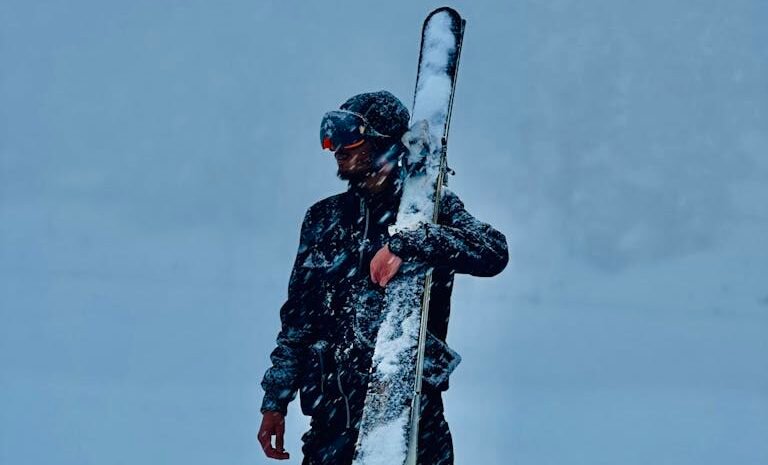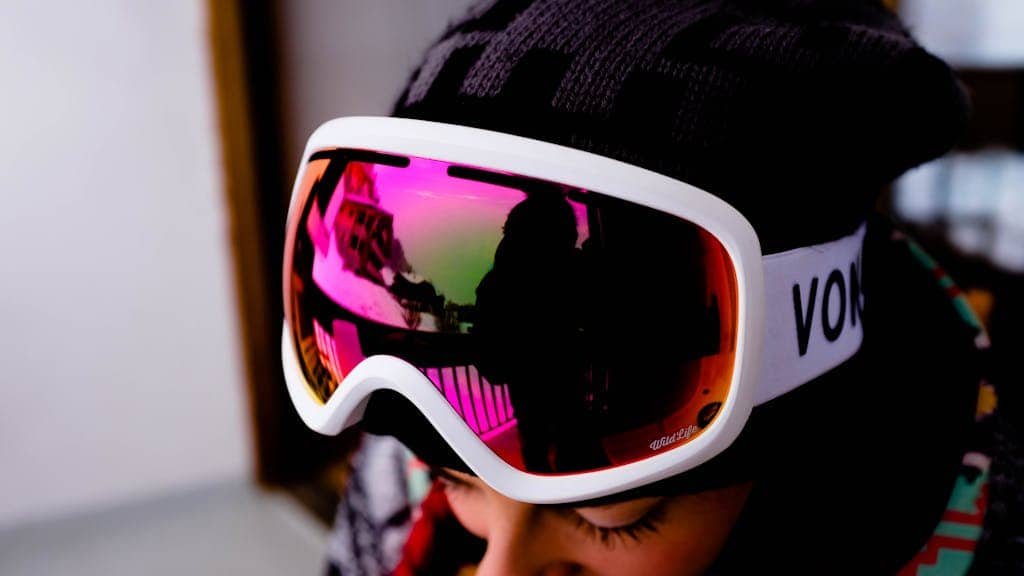How To Choose Skis: What Ski Size Do I Need?
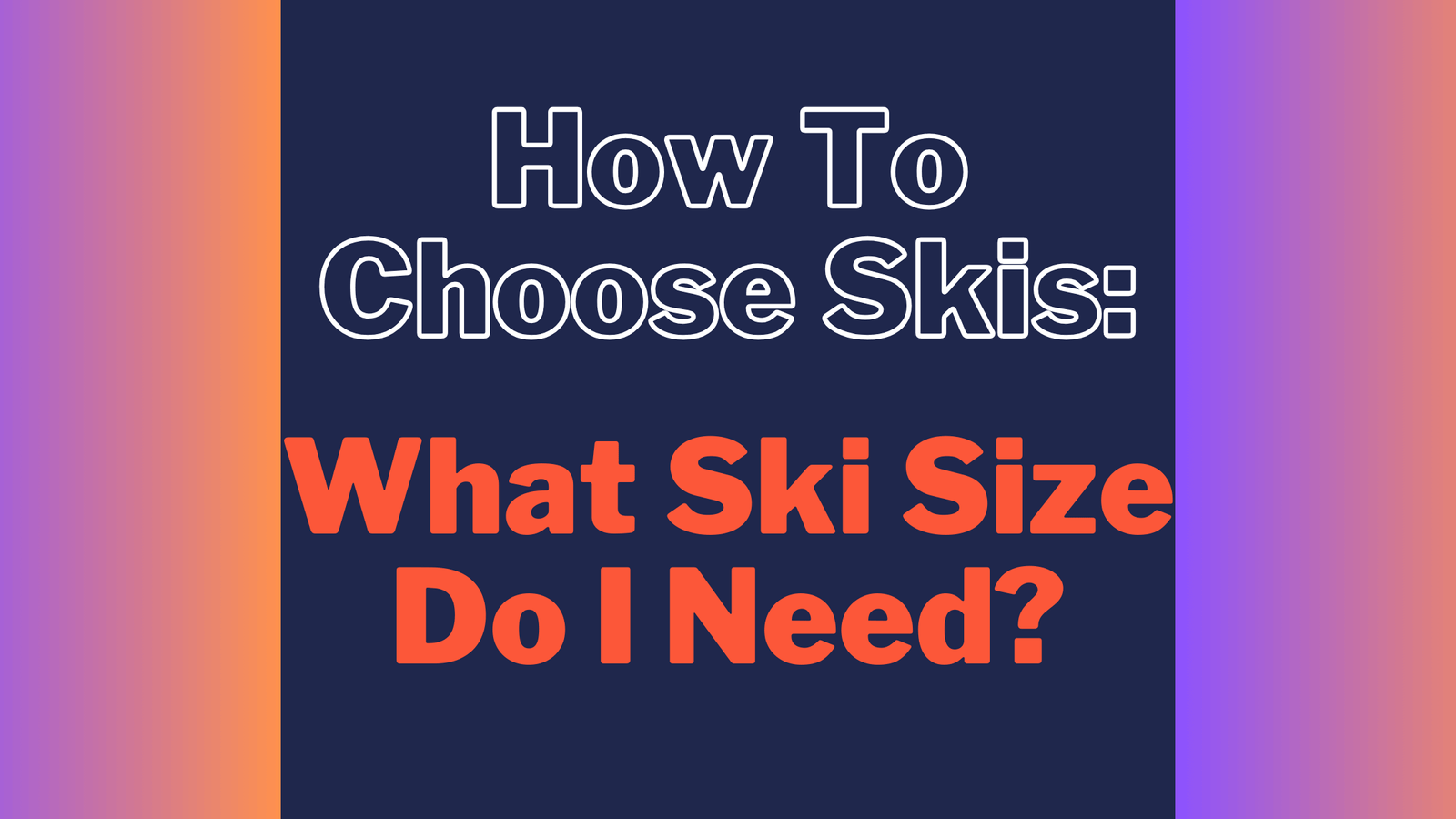
So, you’re asking yourself, “What ski size do I need?” It’s a common question, and the answer isn’t always straightforward. Ski sizing is a complex process that depends on a variety of factors, including your height, weight, style, and the type of terrain you’ll be skiing on. But don’t worry, we’re here to help you choose the right ski length for you.
When it comes to ski length, there’s no one-size-fits-all answer. The right length for you will depend on your height, weight, skill level, and the type of skiing you plan to do. It can make a significant difference in your skiing experience. Too short, and you may find yourself struggling to maintain control at higher speeds. Too long, and you might find them difficult to maneuver, especially if you’re a beginner skier.
Below is a ski size chart I created for your convenience. It is a helpful tool when determining your ideal ski length. This chart takes into account your height to provide a corresponding ski length. However, they should only be used as a starting point. Other factors, such as your style and the type of terrain you’ll be skiing on, should also be considered.
Ski Sizing Chart
| Skier Height (ft) | Skier Height (cm) | Beginner (cm) | Intermediate (cm) | Expert (cm) |
|---|---|---|---|---|
| 4’4″ | 132 | 120-125 | 130-135 | 138-140 |
| 4’6″ | 137 | 125-130 | 135-140 | 143-145 |
| 4’8″ | 142 | 130-135 | 140-145 | 148-150 |
| 4’10” | 147 | 135-140 | 145-150 | 153-155 |
| 5’0″ | 152 | 140-145 | 150-155 | 158-165 |
| 5’2″ | 157 | 145-150 | 155-160 | 163-168 |
| 5’4″ | 163 | 150-155 | 160-165 | 168-173 |
| 5’6″ | 168 | 155-160 | 165-170 | 173-178 |
| 5’8″ | 173 | 160-165 | 170-175 | 178-183 |
| 5’10” | 178 | 165-170 | 175-180 | 183-188 |
| 6’0″ | 183 | 170-175 | 180-185 | 188-190+ |
| 6’2″ | 188 | 175-180 | 185-190 | 190+ |
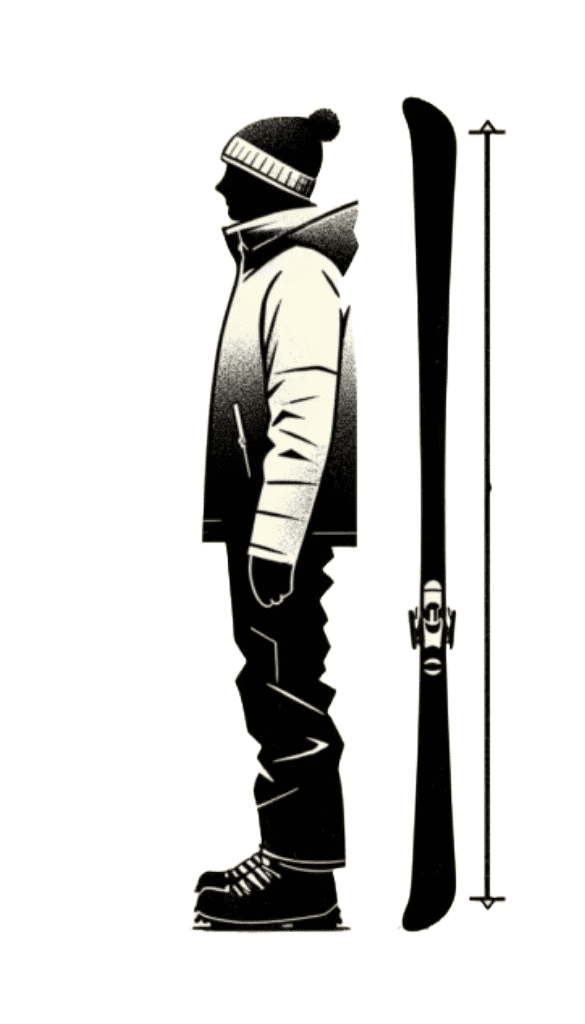
Factors to Consider When Choosing Ski Length
Before delving into the intricacies of ski length selection, it is essential to consider several factors that influence your ski choice.
1. Ski Skill Level
Are you a beginner, an intermediate skier, or an advanced rider looking to conquer challenging terrain?
Your skiing ability level plays a significant role in determining the optimal ski length. Beginners may find shorter skis more manageable and easier to control, allowing them to focus on mastering the basics. But as you progress and start to tackle more challenging terrain, you might find that longer skis offer better stability and speed.
Intermediate skiers might benefit from a slightly longer ski length to challenge themselves and improve their skills. Advanced skiers, on the other hand, might prefer longer skis for added stability and performance on demanding terrain.
2. height and weight
While not the sole determinant of ski length, they play a role in finding the ideal ski size for your body type.
Height and weight are crucial in selecting the right ski size. Taller individuals typically need longer skis for stability, while heavier skiers might opt for longer or stiffer skis to prevent excessive flexing, which can impact control. Lighter skiers could choose shorter, more flexible skis for easier maneuverability. It’s about finding the right balance for your body type, ensuring the skis support you correctly and perform well under the conditions you plan to ski in. When in doubt, consulting with a ski professional can provide a personalized recommendation.
3. skiing style
Do you prefer fast, aggressive turns, or do you enjoy a more relaxed, leisurely skiing experience?
Your personal preference and skiing style should not be overlooked. If you enjoy a more aggressive, fast-paced skiing experience, longer skis can offer the stability and control you need to push your limits. On the other hand, if you prefer a more relaxed, leisurely skiing style, shorter skis might provide the maneuverability and responsiveness you desire.
4. The type of skiing you plan to do
The type of terrain you plan to ski on should also influence your ski length decision. If you primarily ski on groomed slopes and enjoy carving precise turns, shorter skis might be the way to go. However, if you are an off-piste enthusiast and love exploring untouched powder, longer skis will provide the necessary floatation and stability to tackle those conditions.
Ski Dimensions and Types of Skis
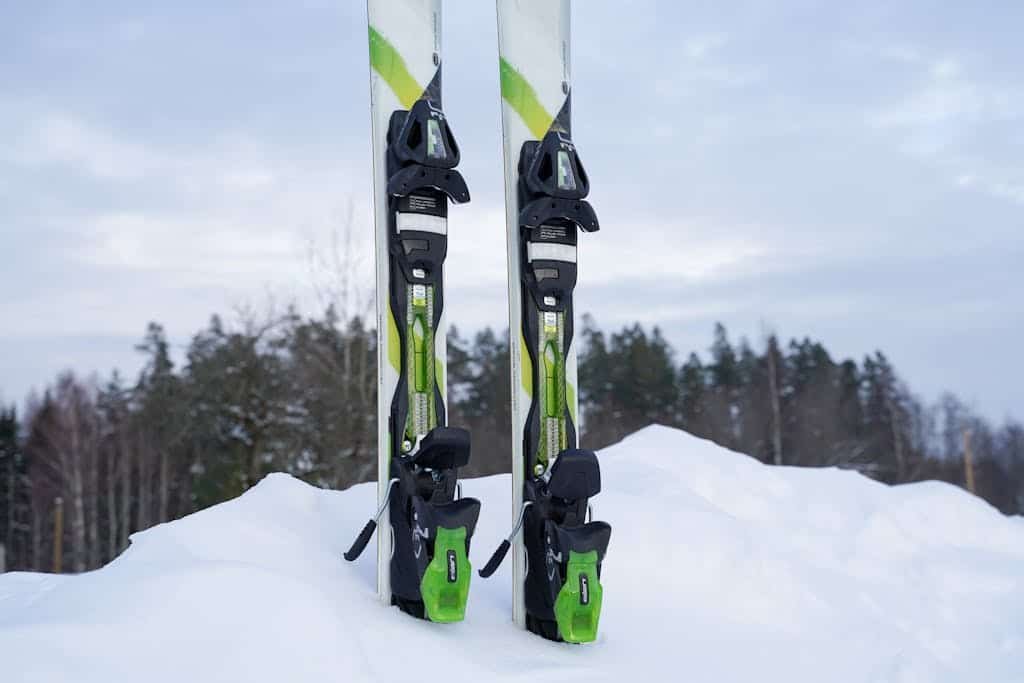
There are three main measurements to consider: the tip, waist, and tail widths. The tip and tail are the front and back ends of the ski, while the waist is the narrowest part in the middle. The dimensions of a ski can greatly affect its performance in the snow.
For example, a narrower ski’s waist allows for quicker turns, making it ideal for groomed terrain. On the other hand, wider skis, often called freestyle or powder skis, are better for deep snow and off-piste conditions. They provide more surface area, which helps you float on top of the snow rather than sinking into it.
The ski waist width is an important factor to consider. The narrower a ski’s waist, the quicker and more responsive it will be. This makes narrow-waisted skis a great choice for carving sharp turns on groomed runs. However, at slower speeds or in soft snow, a wider waist can provide better stability and float.
The tip and tail widths can affect a ski’s turn radius and float in powder. Skis with wider tips and tails will have a larger turn radius, making them better suited for big, sweeping turns. They also provide better float in powder, making them a popular choice for backcountry skis and big mountain skis.
Now, let’s talk about the different types of skis. There are many to choose from, each designed for specific conditions and styles of skiing.
All Mountain Skis
All mountain skis are a popular choice because they’re versatile and perform well in a variety of conditions. They’re designed to handle everything from groomed runs to powder and everything in between.
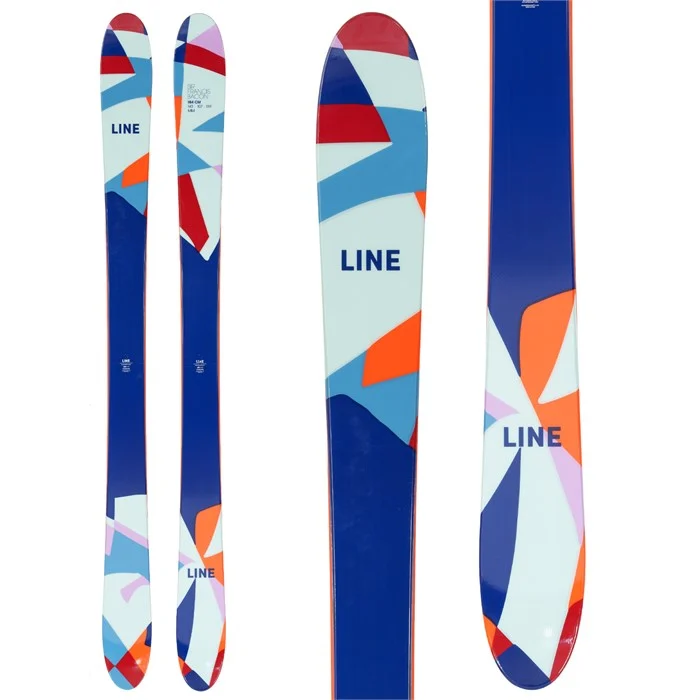
Freestyle skis
Also called jib skis or park skis, are designed for tricks and jumps in the terrain park. They’re typically shorter and have a symmetrical shape, meaning the tip and tail are the same size. This allows for easy switch (backward) skiing.
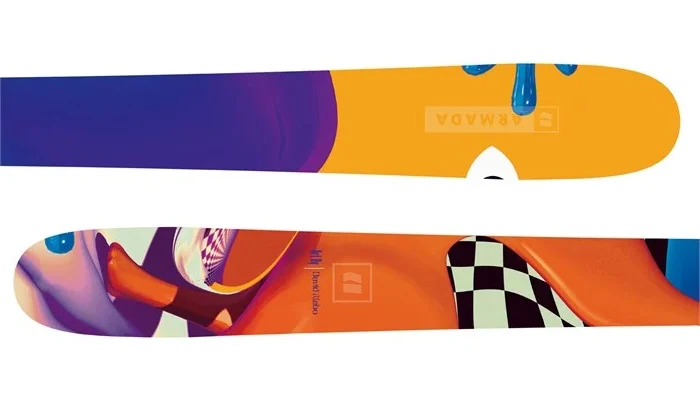
Freeride skis
If you’re into off-piste skiing, you might want to consider freeride skis. These skis are wider and often have a rockered profile, making them great for deep snow and steep terrain. They’re also typically longer, providing stability in challenging conditions.
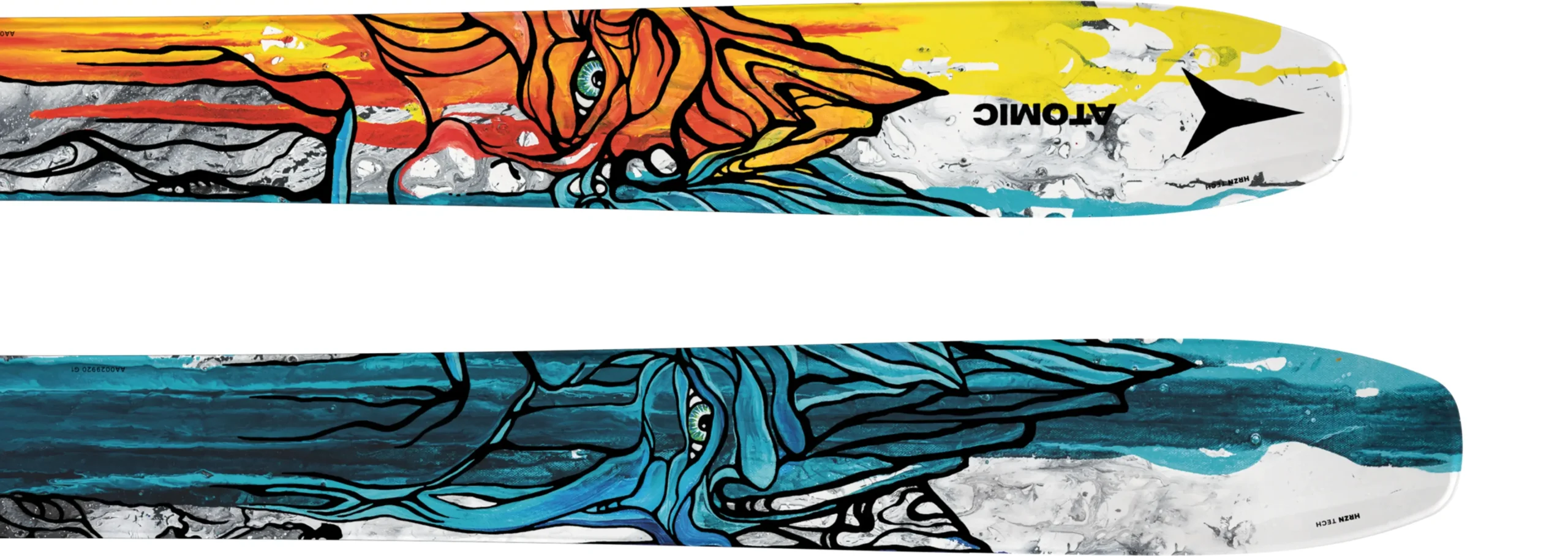
Racing Skis
On the other hand, if you’re a speed demon who loves to carve fast turns on groomed runs, you might want to consider racing skis. These skis are narrow, stiff, and long, providing maximum stability and precision at high speeds.
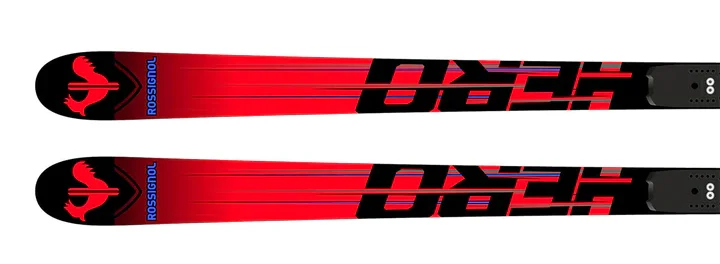
Skiing Styles and Choosing the Right Skis for You
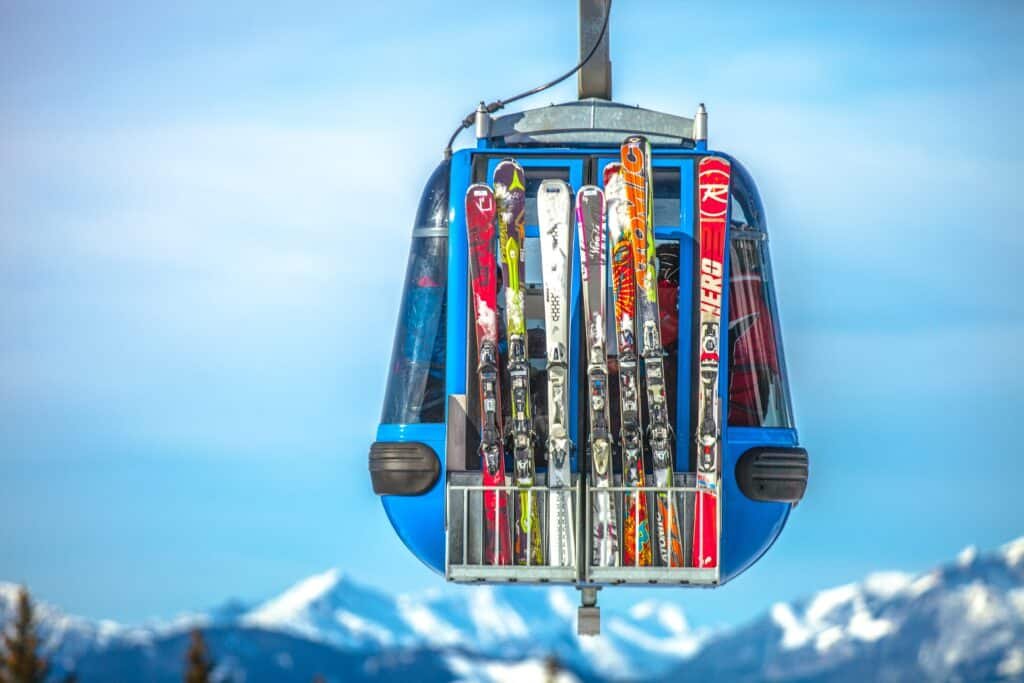
Selecting the appropriate ski length and type is significantly influenced by your skiing style. For those passionate about executing rapid carves on groomed slopes, opting for a longer ski can be advantageous. This choice ensures enhanced stability during high-speed endeavors and facilitates broad, graceful arcs, making it a preferred option for seasoned skiers adept at managing their vigor and velocity. For a deeper dive into how to choose downhill skis, considering your style is the key.
If you’re into freestyle skiing or skiing in tight trees, the shorter ski will be easier to maneuver. They are also typically recommended for beginner skiers as they’re easier to control. Freestyle skis, often called jib skis or park skis, are designed for tricks and jumps in the terrain park. They’re typically shorter and have a symmetrical shape, meaning the tip and tail are the same size. This allows for easy switch (backward) skiing.
If you’re a fan of off-piste skiing, you might want to consider freeride skis or backcountry skis. These skis are wider and often have a rockered profile, making them great for deep snow and steep terrain. They’re also typically longer, providing stability in challenging conditions.
For those who enjoy heli ski trips, big mountain skis are a must. These skis are designed to handle the deep snow and steep terrain that you’ll encounter in the backcountry. They’re typically wider and longer than all mountain skis, providing excellent float in powder and stability in variable conditions.
Ski Design
Rocker and camber refer to the shape of a ski’s profile when viewed from the side. Rocker features a slight upward curve at the tip and tail, while camber involves an arch in the middle. These technologies play a key role in how a ski performs in different snow conditions and terrain.
However, a ski’s character goes beyond its profile. The materials used in its construction significantly impact how it rides. Here’s a quick overview:
- Carbon Fiber: Often used for its lightness and responsiveness, offering agility and quick turn initiation.
- Fiberglass: Provides a forgiving and dampened ride, ideal for stability at speed.
- Metal: Enhances power, stability, and vibration dampening.
- Wood: Different types of wood cores provide varying levels of flex and responsiveness.
Another critical factor is the ski’s flex pattern, which determines how it bends under pressure. Softer skis are typically more forgiving and easier to turn, while stiffer skis provide more stability and power for experienced skiers who tackle challenging terrain.
The magic of ski design lies in the combination of all these elements. Each design choice – from rocker and camber profile to the intricate layering of materials and flex pattern – contributes to create a ski with a unique personality and performance characteristics tailored for different skiers and snow conditions.
Ski Technology and Modern Ski Designs
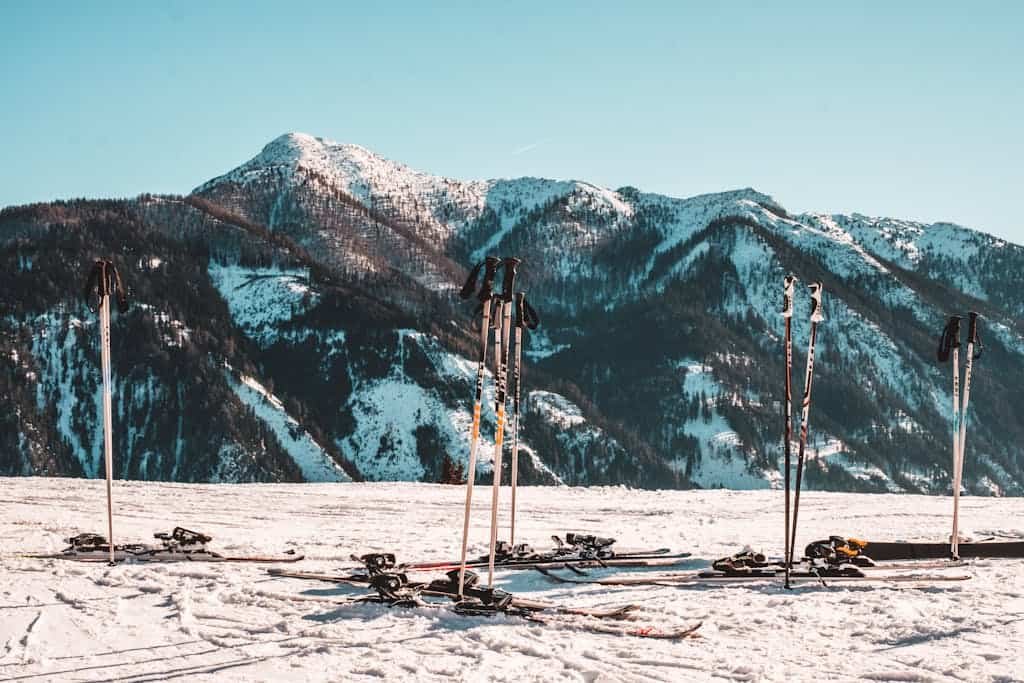
Modern skis combine a variety of technologies and designs to enhance performance and cater to different styles. One of the key aspects of ski design is the profile, which refers to the shape of the ski when viewed from the side. There are three main types of ski profiles: camber, rocker, and a combination of the two.
Cambered skis have a slight upward curve in the middle with the contact points near the ends of the ski. This design provides good edge hold and stability, making cambered skis ideal for groomed runs and hard-packed snow. Carving skis, often used for racing, typically have a cambered profile to allow for precise turns at high speeds.
Rockered skis, also known as reverse camber skis, have a shape similar to a rocking chair with contact points towards the middle of the ski. This design improves float in powder and makes the skis more maneuverable, which is why it’s often found in powder skis and freeride skis. A fully rockered ski is great for deep snow but can be harder to control on groomed runs.
Many skis fall into the category of mixed profile, combining elements of both camber and rocker to offer a balance of control and versatility. All mountain skis generally have this mixed profile. They might have a cambered profile underfoot for edge hold on hard snow and a rockered tip and tail for better float in powder and easier turn initiation.
Another aspect of modern ski design is the incorporation of specific features for different styles. For example, twin tip skis, often used for freestyle skiing, have a curved-up tail similar to the tip, allowing skiers to land jumps backward. On the other hand, carving skis have a narrower waist and larger sidecut to facilitate quick, sharp turns.
The materials used in skis also play a significant role in their performance. Most skis have a wood or foam core sandwiched between layers of various materials like fiberglass, carbon fiber, or metal. The choice of materials can affect the ski’s weight, flexibility, stability, and responsiveness.
Skiing Tips for Different Skill Levels
Skiing is a sport that caters to a wide range of skill levels, from beginners just getting their feet wet to advanced skiers who carve down the mountain with ease. The type of skis you choose can significantly impact your performance and enjoyment, so it’s important to select a pair that matches your skill level.
Beginner Skiers
If you’re a beginner skier, you might be wondering, what ski size you need or whether to choose longer or shorter skis. As a beginner, you’ll typically want to start with shorter skis. They’re easier to turn and control, which can help you build confidence on the slopes.
It is advisable to choose skis specifically designed for beginners or those labeled as “all-mountain skis.” These skis provide stability, forgiveness, and ease of turning, allowing you to build confidence and develop your skills.
But what exactly makes these skis suitable for beginners? Well, they often have a narrower waist width, which provides better stability and balance, making it easier for you to maintain control as you navigate down the slopes. They also have a softer flex and a rockered tip and tail, which helps with turn initiation and reduces the chance of catching an edge.
Intermediate Skiers
As an intermediate skier, you’ve mastered the basics and are ready to tackle more challenging terrain. At this stage, you might want to start exploring longer skis, which offer better stability at higher speeds.
Intermediate skis often have a mixed profile, with camber underfoot for edge hold on hard snow and a rockered tip and tail for better float in powder and easier turn initiation. They also tend to be a bit stiffer than beginner skis, offering more control and performance.
Advanced Skiers
Advanced skiers often prefer longer skis for their stability and speed. However, the right ski length for an advanced skier also depends on their style. If you’re into carving fast turns on groomed runs, a longer ski might be the best choice. If you’re into freestyle skiing or skiing in tight trees, a shorter ski might be easier to maneuver.
Advanced skiers also have the skills to handle a variety of ski types, from carving skis for groomed runs to powder skis for deep snow. They might even have multiple pairs of skis for different conditions.
Gender-Specific Skis

When it comes to skiing, it’s not just about your skill level and style. Your gender can also play a role in determining the right skis for you. Some manufacturers offer women-specific skis that are designed to cater to the typical physical characteristics and skiing styles of female skiers.
Women Skis
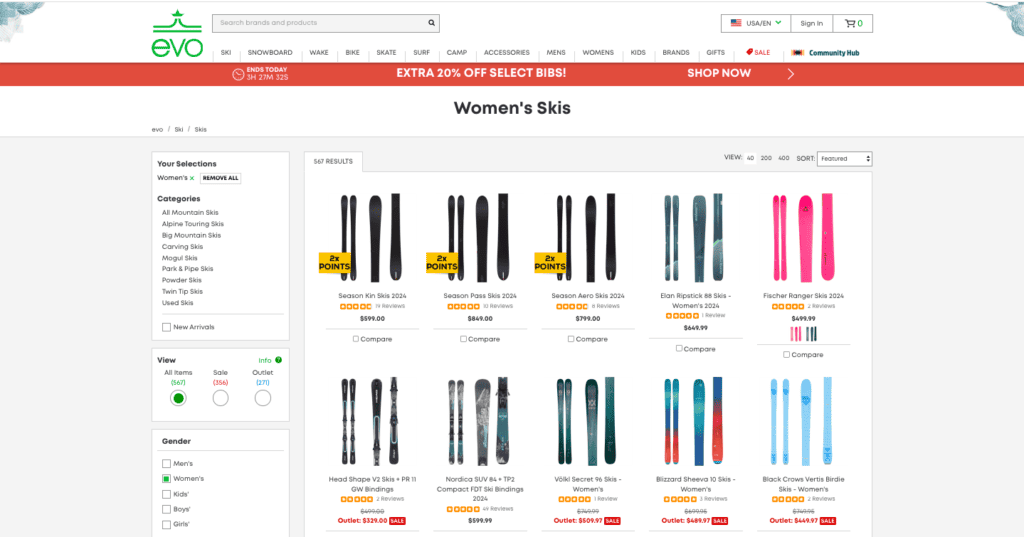
For the female skier, women-specific skis are often a good choice. These skis are typically lighter and have a softer flex compared to men’s skis, making them easier to turn. They’re also often designed with a forward-mounted binding, which accommodates the typical lower center of gravity of women.
Women’s skis come in all types, from all mountain skis to freeride skis, and they’re available in a range of lengths and widths to suit different skill levels and styles. So whether you’re a beginner looking for your first pair of skis or an advanced skier looking for a new challenge, there’s likely a women’s ski that’s perfect for you.
Men Skis
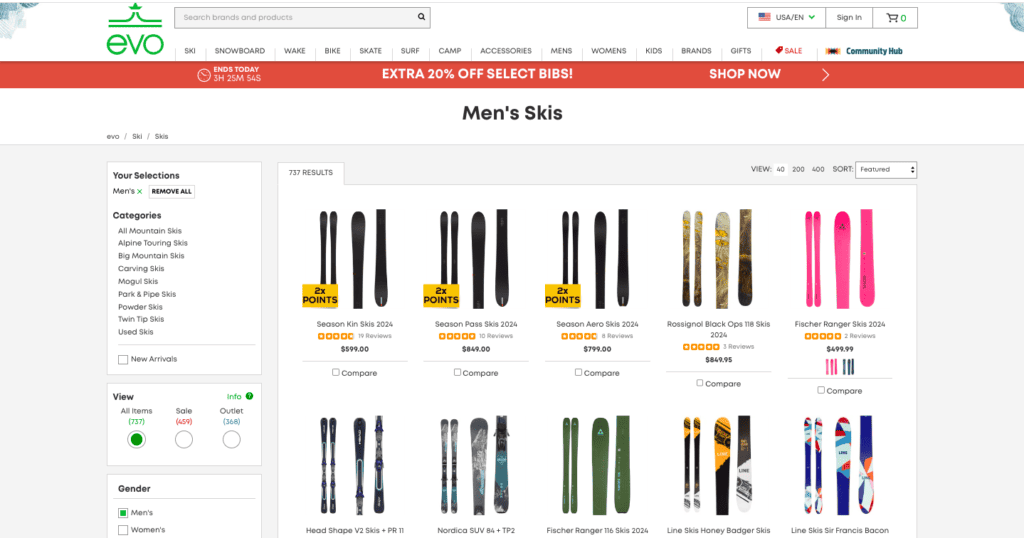
Male skiers, on the other hand, might find that men’s skis, which are typically heavier and stiffer, offer the performance and control they’re looking for. Like women’s skis, men’s skis come in a variety of types and sizes to suit different skill levels and styles.
If you’re an advanced male skier who loves off-piste skiing, you might prefer longer, wider skis for their stability and float in powder. If you’re a new skier, shorter, narrower skis might be a better choice for their ease of control.
Ski Maintenance and Care
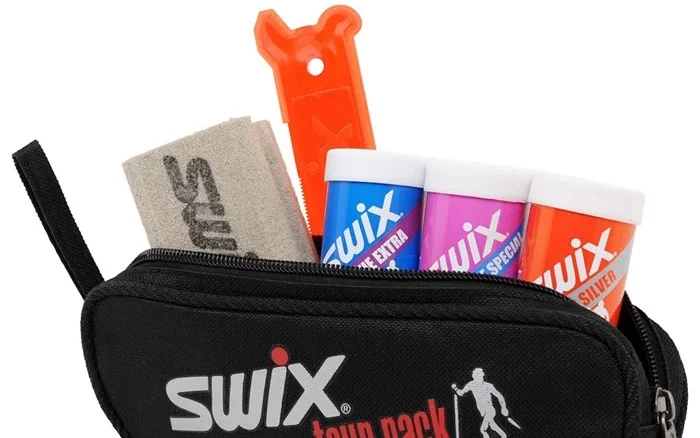
Once you’ve found the perfect pair of skis, it’s important to take good care of them to ensure they last as long as possible and perform at their best. Regular maintenance can also help you stay safe on the slopes. Here are some tips on ski maintenance and care.
Waxing Your Skis
Waxing your skis regularly can help them glide more smoothly and efficiently over the snow. The type of wax you should use depends on the snow conditions. For instance, colder, harder snow requires a harder wax, while warmer, softer snow requires a softer wax.
Waxing your skis involves cleaning the bases, applying the wax with a waxing iron, letting it cool, and then scraping off the excess and buffing the base. If you’re not comfortable doing it yourself, most ski shops offer waxing services.
Sharpening Your Edges
Sharp edges are crucial for maintaining control of hard-packed snow and icy conditions. You can tell if your edges need sharpening by running your fingernail along the edge. If it doesn’t shave off a tiny sliver of the nail, it’s time for a sharpening.
Edge sharpening involves running a diamond stone along the edges to remove burrs, followed by a file to set the edge angle, and finally, a ceramic stone to polish them. This can be a bit tricky, so you might want to have it done at a ski shop, especially if you’re new to ski maintenance.
Checking Your Bindings
Your bindings are what keep your boots attached to your skis, so it’s important to check them regularly to ensure they’re functioning properly. Make sure the bindings are set to the correct DIN setting, which is a measure of how easily the bindings will release your boots in a fall. This setting depends on your weight, height, skill level, and boot size. If you’re unsure about the correct setting, it’s best to have your bindings checked at a ski shop.
Storing Your Skis
Proper storage is key to prolonging the life of your skis. At the end of the ski season, clean your skis, apply a layer of wax to protect the bases (but don’t scrape them off), and store them in a cool, dry place. Avoid storing your skis in a roof box or car rack, as the heat and humidity can damage them.
Conclusion
Choosing the right ski size and type is a crucial step in ensuring you have the best possible experience on the slopes. Whether you’re a beginner or an advanced skier, taking the time to understand ski sizing, ski dimensions, and how different ski types affect performance will go a long way in helping you find the perfect pair of skis.
Remember, the right ski length for you will depend on your height, weight, skill level, and the type of skiing you plan to do. A size chart can be a helpful starting point, but it’s also important to consider your skiing style and the conditions you’ll be skiing in. For instance, if you’re an advanced skier who loves off-piste skiing, you might prefer longer skis for their stability and float in powder. On the other hand, if you’re a beginner or intermediate skier, shorter skis might be a better choice for their ease of control.
For ski types, there’s a ski for every style and condition. From all mountain skis that can handle a variety of conditions to specialized skis like freestyle skis, powder skis, and carving skis, the options are vast. Understanding the characteristics of each type, from their dimensions to their profile, can help you make an informed decision.
And remember, while it’s important to have the right equipment, nothing beats practice and experience on the slopes. So whether you’re renting skis for your first time or buying a pair for your next big mountain adventure, just get out there and enjoy the ride. After all, skiing is about having fun, challenging yourself, and enjoying the great outdoors. So gear up, hit the slopes, and have a blast!
FAQ
How do I know what size skis I need?
The lengths of the skis depend upon weight and height, ski style, and skills. There is no exact formula to determine the correct height, however, the appropriate length of the ski should be between your chin and the head. For example, skiers 6′ tall will be looking for skis ranging from 170cm to 190cm.
What do ski size numbers mean?
All modern skiers use the same dimension – three numbers are used for measuring its width. On skis, it would say 12286-115. It’s 122mm in the middle (larger point), the waist is 86 mm below the foot and the tail width is 115 mm in the middle.
How do I know what size ski to get for my child?
Youth skis must be placed around your baby. Height and weight are two key determinants when choosing the ski length for young people.
How do you measure ski width?
Typically measured ski width takes place in the waist, directly under the feet. It is normally the thin point where skiing is done. Ski lengths are measured in millimeters. 95mm. Skis under 95mm will be skied on the piste.

